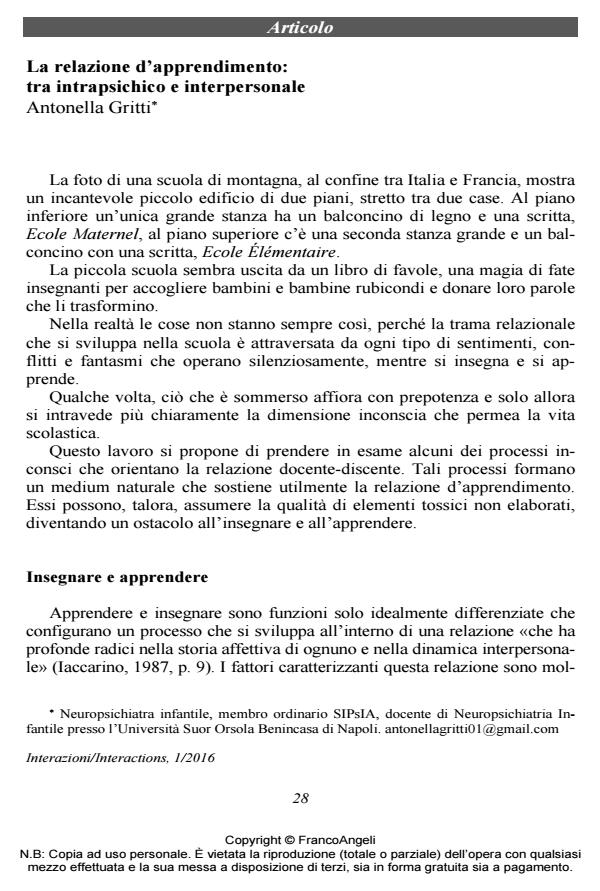The learning relationship: between intrapsychic and interpersonal
Journal title INTERAZIONI
Author/s Antonella Gritti
Publishing Year 2016 Issue 2016/1
Language Italian Pages 13 P. 28-40 File size 161 KB
DOI 10.3280/INT2016-001003
DOI is like a bar code for intellectual property: to have more infomation
click here
Below, you can see the article first page
If you want to buy this article in PDF format, you can do it, following the instructions to buy download credits

FrancoAngeli is member of Publishers International Linking Association, Inc (PILA), a not-for-profit association which run the CrossRef service enabling links to and from online scholarly content.
The author proposes to consider some of the unconscious processes that guide the teacher-student relationship. These processes form a natural medium that effectively supports the teaching and the learning. Moreover, they can assume the quality of unelaborated toxic elements, becoming an obstacle to teaching and to learning. Starting from a study of Kaës, the paper describes some configurations of the unconscious dynamics between teacher and student and the influence of the fantasies of omnipotence and immortality on the quality of the relationship. The presentation of clinical material is used to support the hypothesis developed by the author and also to illustrate a working group with students that are going to became teachers.
Keywords: School, student, teacher, interpersonal relationship, transfert, idealization, omnipotence
Antonella Gritti, La relazione d’apprendimento: tra intrapsichico e interpersonale in "INTERAZIONI" 1/2016, pp 28-40, DOI: 10.3280/INT2016-001003